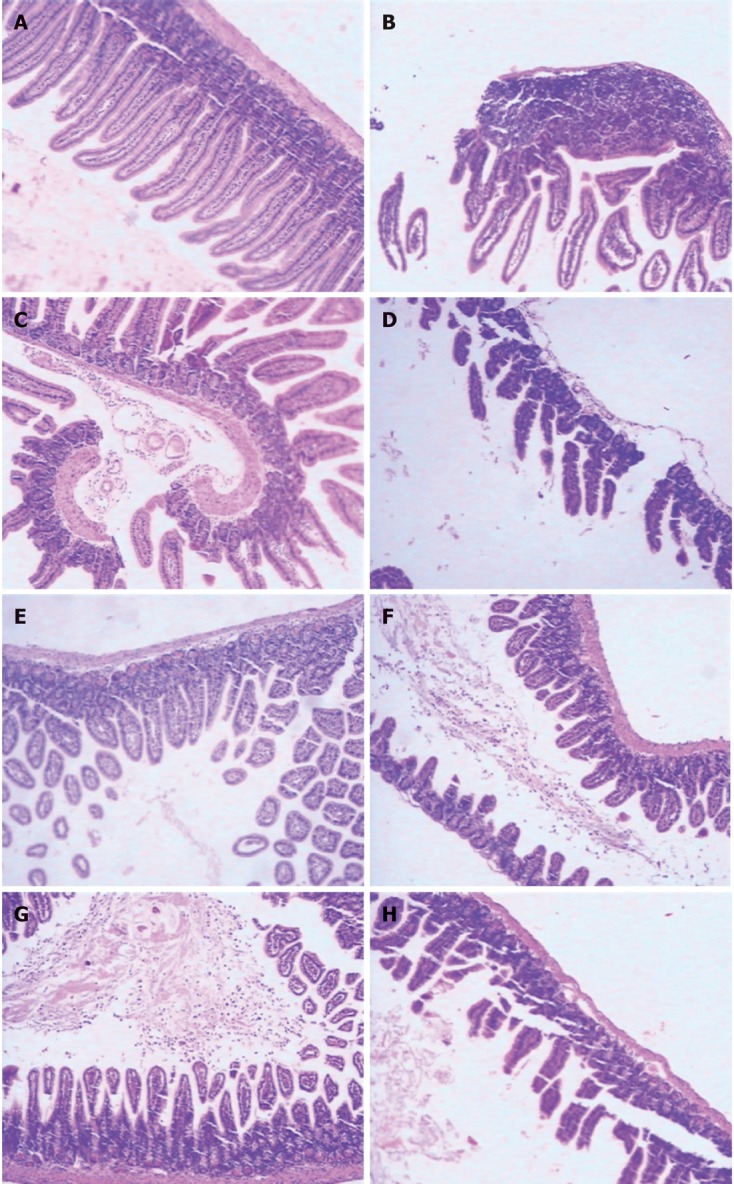Figure 1.

Effects of tricarbonyldichlororuthenium (II) dimer carbon monoxide-releasing molecules on small intestine injury in septic mice. Mice were challenged with cecal ligation and perforation (CLP) and treated with tricarbonyldichlororuthenium (II) dimer. The mid-ileum (A-D) and mid-jejunum (E-H) specimens harvested from different groups of animals were immersed in 4% formaldehyde solution at 24 h after CLP. The tissue was embedded in paraffin wax, serially sectioned, and stained with hematoxylin-eosin. Tissue morphologic characteristics were evaluated by light microscopy. A, E: Sections from sham mice had normal architecture of the intestinal epithelium and wall; B, F: Sections from septic mice showed inflammatory cell infiltration through the wall, concentrated below the epithelial layer, edema of the distal portion of the villi, and necrosis of the epithelium at the villous tips; C, G: Section from septic mice treated with carbon monoxide-releasing molecules-2 showed a significant decrease in granulocyte infiltration, while no marked improvement of hydropic degeneration. The figure is representative of at least three experiments performed on different days.
